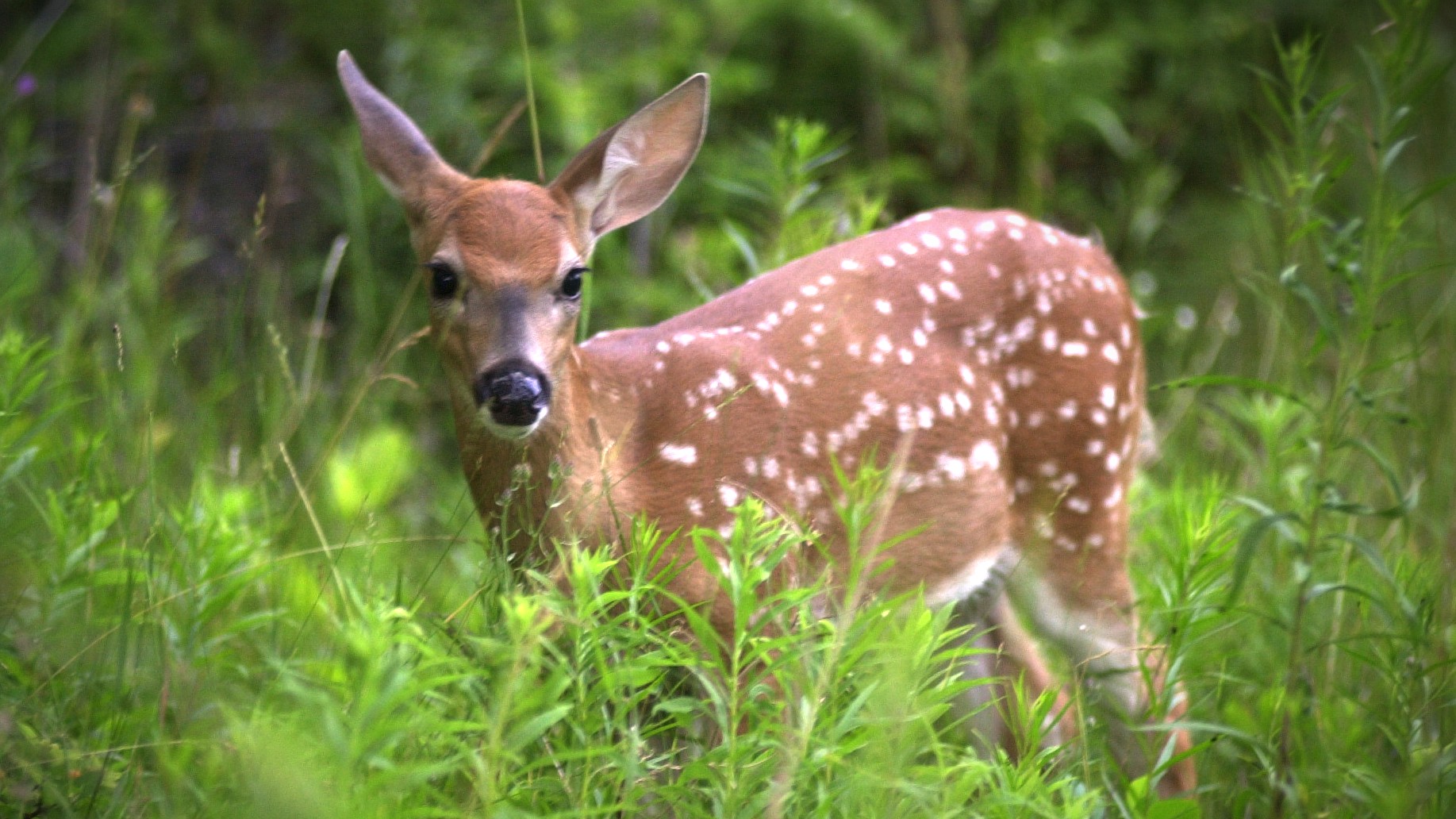MADISON — As warmer spring weather approaches, the Wisconsin Department of Natural Resources reminds the public that wild animals and their young will be on the move across Wisconsin.
Knowing what to do before you find a baby animal can make all the difference in the moment to protect its health and help keep wildlife wild. The DNR has various resources to help determine when baby wild animals need help and when it’s best to leave them in their natural environment.
If You Care, Leave Them There
First, remember the phrase, “If you care, leave them there.”
Most of the time, it is perfectly natural for mothers, including white-tailed deer, to leave their young alone for long periods of time. Before fawns are strong enough to keep up with their mothers, they spend hours alone, staying quiet and still. This natural behavior keeps them safe from predators while their mothers forage for food.
Drawing attention to a fawn’s location can tip-off predators or keep its mother away longer than she would like. You can help by keeping people and pets away from the area. If you have interested children, they can learn to keep wildlife wild by observing the fawn from a safe distance.
Many other young wild animals spend time alone in the spring and summer. For species-specific advice, visit the DNR’s Keep Wildlife Wild webpage for tips on how to decide if a young wild animal is truly orphaned or in need of help. You can also use the bird, mammal or fawn keys for guidance on evaluating wildlife situations and choosing an appropriate course of action.
Know When To Move A Baby Animal
If you find a baby animal in an unsafe location, such as near a roadway, you can carefully move it several yards to a safer spot. Before you act, make sure to put on gloves and a facemask to protect the animal’s health. Also, consider your own safety when walking near a road.
The young animal’s mother will find her young if it is moved only a short distance. Human scent transfer does not cause wild animals to reject their young, but avoid touching the baby animal unless absolutely necessary.
Helping Sick Or Injured Wild Animals
If you find a wild animal that appears sick or injured, leave it alone. Take pictures and make notes about what you’re observing. Then call the DNR or a licensed wildlife rehabilitator for guidance. Visit the DNR website for a directory of rehabilitators in your area.
If the wildlife rehabilitator you talk to determines that a wild animal needs rehabilitation, place the animal inside a ventilated container. Place the container somewhere that is dark, warm and quiet until you can arrange transport to a licensed wildlife rehabilitator. Reduce stress on the animal by keeping children and pets away. Do not provide food or water; this can do more harm than good. See our Recommendations For Transporting Wildlife webpage for more information.
.
.



